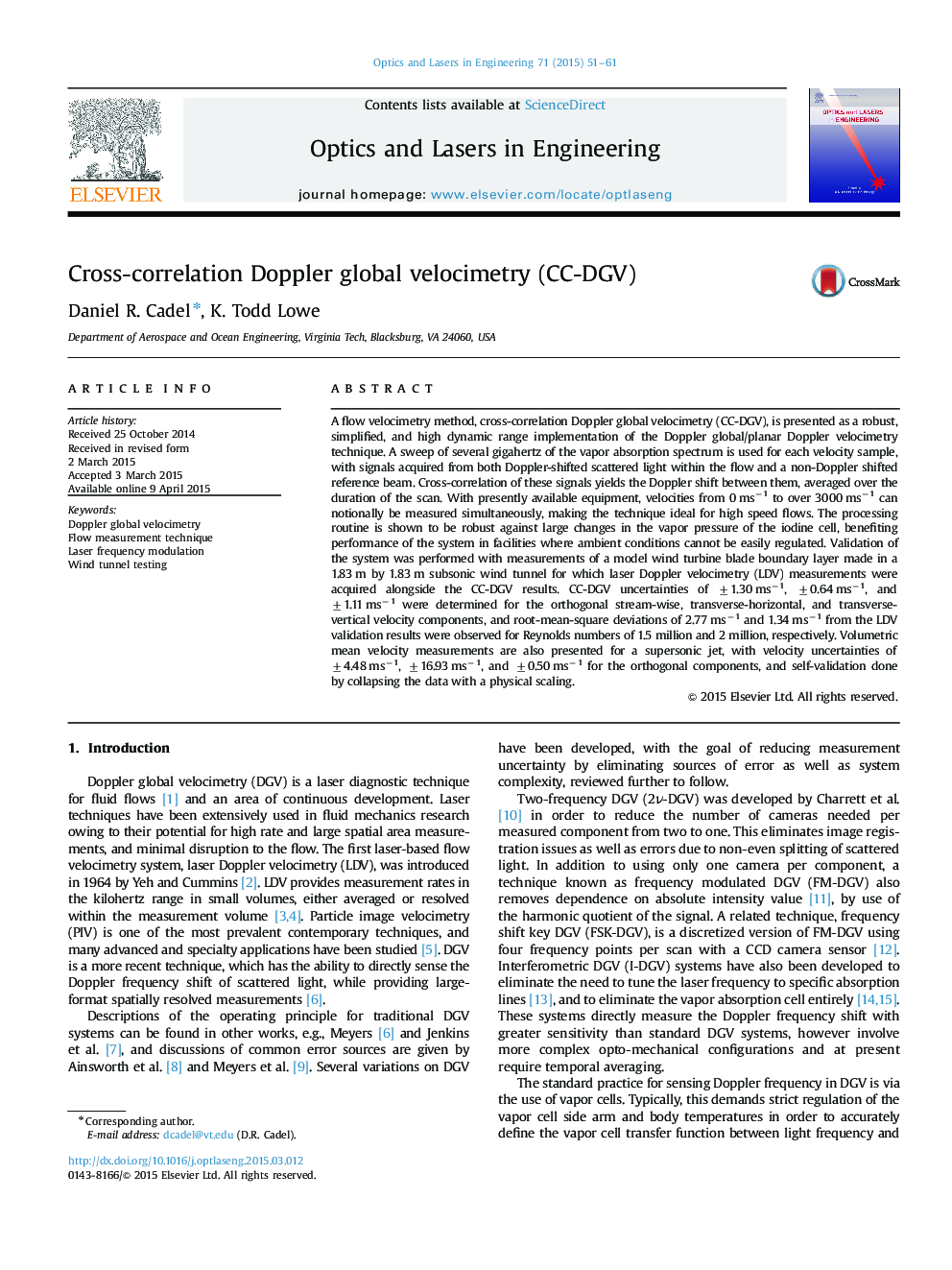| Article ID | Journal | Published Year | Pages | File Type |
|---|---|---|---|---|
| 734778 | Optics and Lasers in Engineering | 2015 | 11 Pages |
•We present and describe cross-correlation Doppler global velocimetry (CC-DGV).•CC-DGV is robust, simplified, and has a theoretical dynamic range over 3000 ms−1.•Uncertainty from the cross-correlation algorithm does not scale with velocity.•We report CC-DGV results and uncertainties in both subsonic and supersonic flow.
A flow velocimetry method, cross-correlation Doppler global velocimetry (CC-DGV), is presented as a robust, simplified, and high dynamic range implementation of the Doppler global/planar Doppler velocimetry technique. A sweep of several gigahertz of the vapor absorption spectrum is used for each velocity sample, with signals acquired from both Doppler-shifted scattered light within the flow and a non-Doppler shifted reference beam. Cross-correlation of these signals yields the Doppler shift between them, averaged over the duration of the scan. With presently available equipment, velocities from 0 ms−1 to over 3000 ms−1 can notionally be measured simultaneously, making the technique ideal for high speed flows. The processing routine is shown to be robust against large changes in the vapor pressure of the iodine cell, benefiting performance of the system in facilities where ambient conditions cannot be easily regulated. Validation of the system was performed with measurements of a model wind turbine blade boundary layer made in a 1.83 m by 1.83 m subsonic wind tunnel for which laser Doppler velocimetry (LDV) measurements were acquired alongside the CC-DGV results. CC-DGV uncertainties of ±1.30 ms−1, ±0.64 ms−1, and ±1.11 ms−1 were determined for the orthogonal stream-wise, transverse-horizontal, and transverse-vertical velocity components, and root-mean-square deviations of 2.77 ms−1 and 1.34 ms−1 from the LDV validation results were observed for Reynolds numbers of 1.5 million and 2 million, respectively. Volumetric mean velocity measurements are also presented for a supersonic jet, with velocity uncertainties of ±4.48 ms−1, ±16.93 ms−1, and ±0.50 ms−1 for the orthogonal components, and self-validation done by collapsing the data with a physical scaling.
